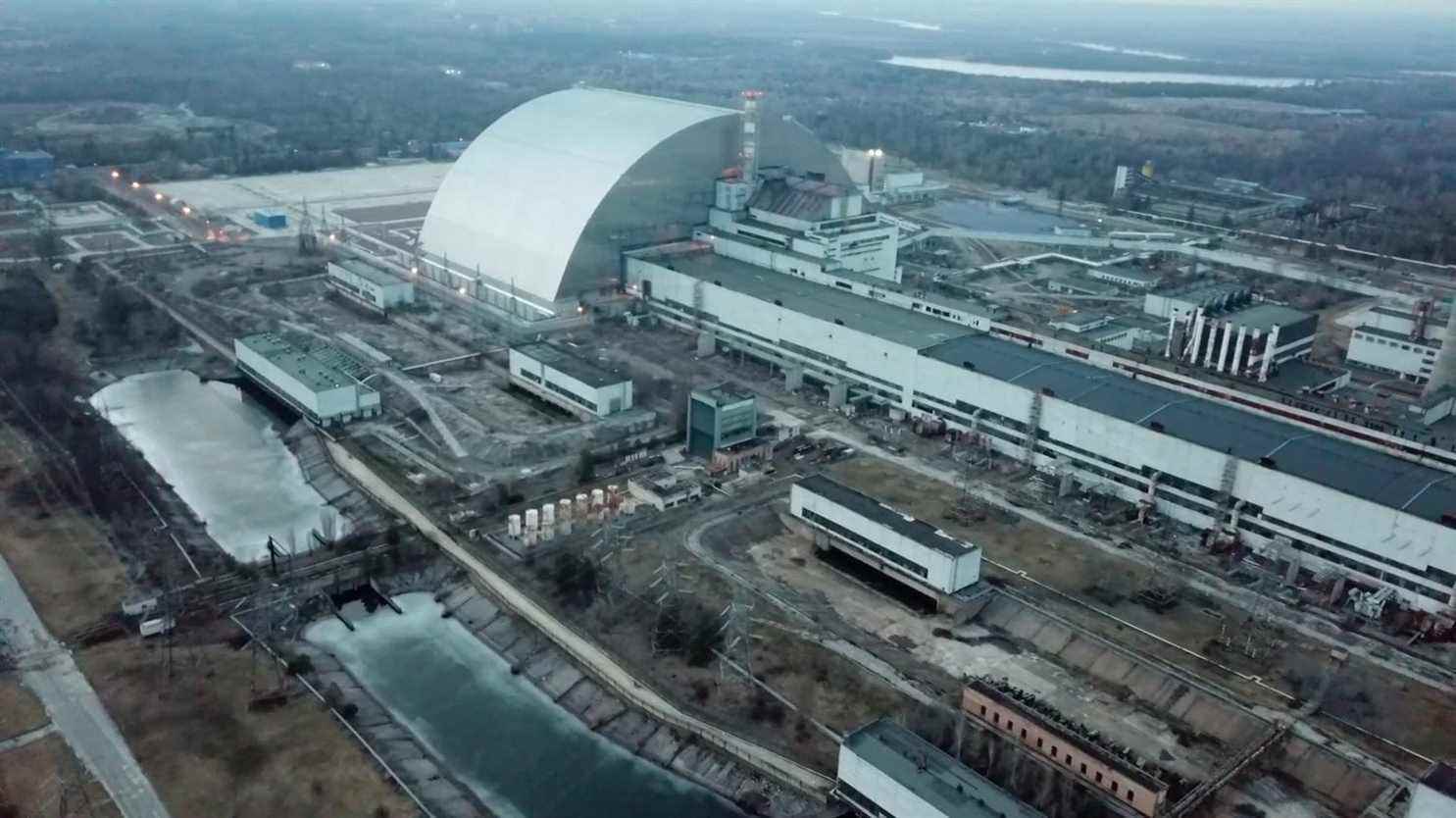After the Zaporijia nuclear power plant, it is now Chernobyl’s turn to focus concerns in Ukraine. The Ukrainian operator Ukrenergo announced on Wednesday March 9 that the power supply had been “completely” cut on site, due to Russian military actions. According to experts, however, the power cut does not “no major security risk”.
What happened ?
The plant, the cause of the most serious civil nuclear disaster in 1986, “has been completely disconnected from the electricity grid due to the military actions of the Russian occupier”, wrote the operator on his Facebook page, without further details. With the offensive underway, “there is no possibility to restore the lines”he specified.
Emergency diesel generators took over andt “will be able to ensure the vital activity of the site for a maximum of 48 hours”reported the regulator. “After that, the stored fuel cooling systems will stop”warned Ukrainian Foreign Minister Dmytro Kuleba.
The Chernobyl power plant, site of the worst civilian nuclear disaster in history in 1986, includes reactors that have been decommissioned, including number 4 covered with a sarcophagus, and radioactive waste repositories.
Telephone communications are also interrupted on the site, where more than 200 technicians and guards have been blocked since February 24. They now operate under Russian command. The International Atomic Energy Agency (IAEA), the UN nuclear policeman, has asked Moscow to allow them to rotate with other teams, rest and fixed hours being essential to the security of the site.
What is the risk ?
The damaged reactor itself does not pose a problem, explained to AFP Karine Herviou, deputy director general of the French Institute for Radiation Protection and Nuclear Safety (IRSN). Because “the molten heart does not need a cooling system”. And the fuels still stored in a pool on the site?
Given the time that has elapsed since the Chernobyl accident of 1986, “the thermal load of the spent fuel storage pool and the volume of cooling water are sufficient to ensure efficient heat removal without electricity”ensures the International Atomic Energy Agency (IAEA). This cut in the electrical power supply therefore does not “no major impact on safety”.
The 20,000 fuel assemblies stored in the pool “are relatively cold”and even if the electricity is not restored after 48 hours, “there is no danger of radioactive releases according to what we know of the installations”confirms Karine Herviou, Deputy Director General of the French Institute for Radiation Protection and Nuclear Safety (IRSN).
In such a case, studies carried out after the accident at the Fukushima power plant in Japan in March 2011 “show a slow rise in temperature of the order of up to 60°C but no dewatering of the assemblies”. “The water will gradually heat up but will not be brought to a boil”she says.
What about power plants in operation?
A power outage “would pose more problems” in the four power plants in operation in the country“where it is absolutely necessary to ensure cooling of the fuel present in the reactor core or in the pool”believes the head of the IRSN. “The heat to be evacuated is much greater there” than in Chernobyl.
Generators could “power cooling systems “for 7-10 days”. Beyond, without electricity, “a Fukushima-type scenario would occur with a risk of reactor core meltdown”.
Since the beginning of the Russian invasion, the Director General of the IAEA, Rafael Grossi, has called for the greatest restraint. He has repeatedly offered to visit Ukraine to establish a framework to ensure site security during the conflict, the first to take place in a country with a large nuclear program.
“This time, if an accident occurs, the cause will not be a tsunami caused by Mother Nature but the result of human failure to act when we knew we could and had to.”he launched earlier this week.
